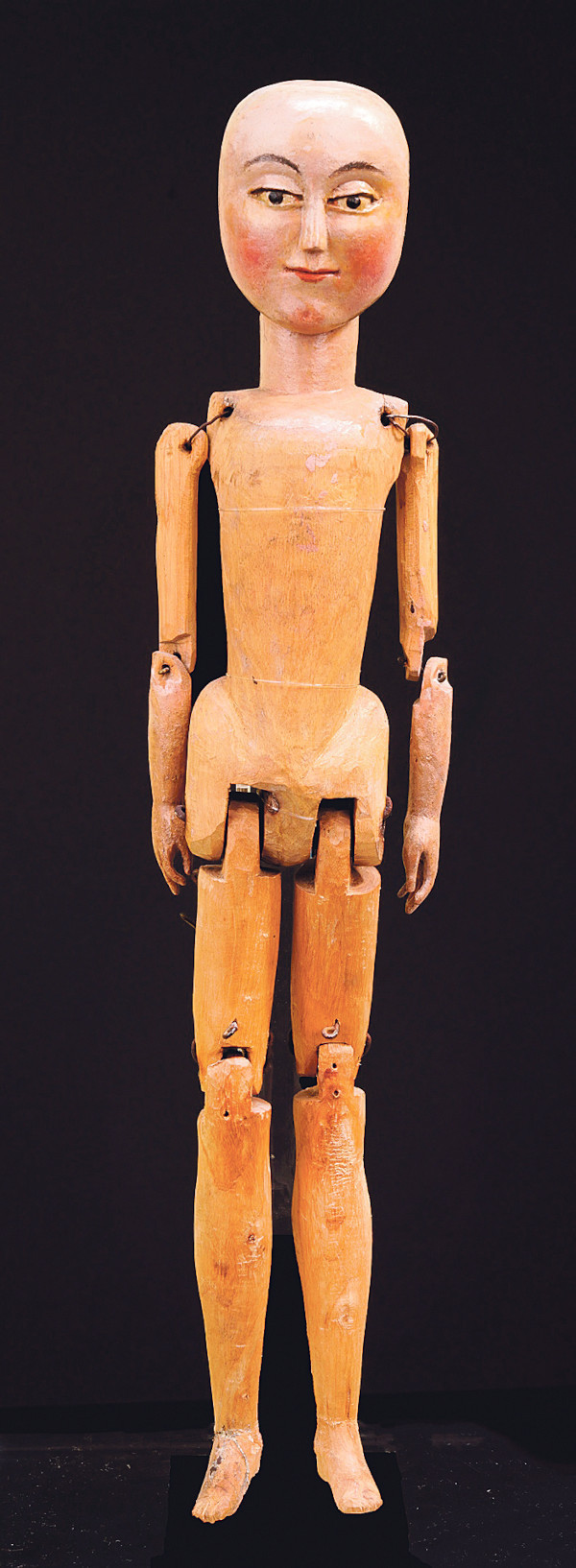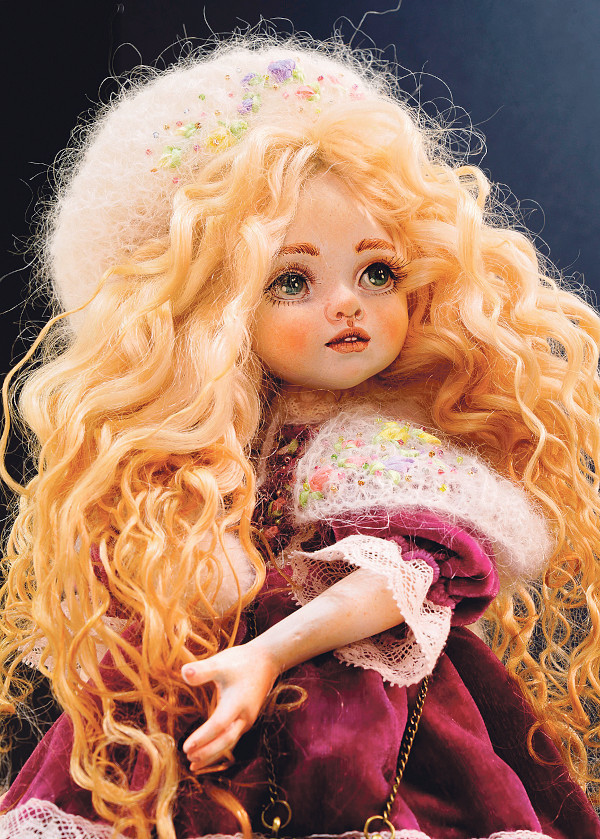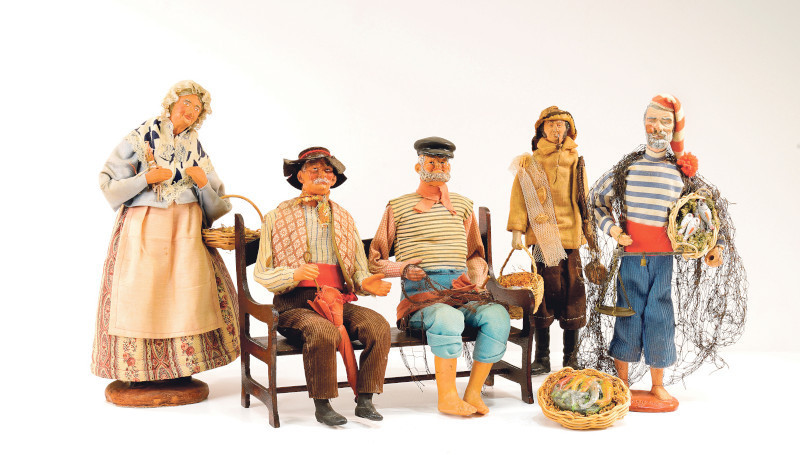At the Rahmi M. Koç Museum, the World Dolls Exhibition, which tells the story of dolls from ancient times to the present, ends on 31 December. The exhibition, which reveals the purpose of use of dolls in different periods and the great transformation of the doll industry over the centuries, offers a very special selection with 2,500 dolls, both handmade and industrial products.  The World Dolls Exhibition awaits its visitors at the Rahmi M. Koç Museum with a very special selection from 18th century wooden dolls to Anatolian rag dolls, Asian and African faith dolls to fashion dolls, and even silk-dressed festival dolls from the Far East. The exhibition, which has been presenting 2,500 babies from 80 countries since September 2021, will remain open until the end of December for those who have not yet been able to visit and want to see it again. From ancient times to the 21st century, human-shaped objects of belief and culture, as well as children’s toys, are sociological elements, works of art and an important branch of the toy industry along with mass production. The World Dolls Exhibition, which he pioneered, both explains the purpose of use of the concept of dolls since prehistoric times, and opens up the great transformation of the doll industry over the centuries to the experience of the visitors.
The World Dolls Exhibition awaits its visitors at the Rahmi M. Koç Museum with a very special selection from 18th century wooden dolls to Anatolian rag dolls, Asian and African faith dolls to fashion dolls, and even silk-dressed festival dolls from the Far East. The exhibition, which has been presenting 2,500 babies from 80 countries since September 2021, will remain open until the end of December for those who have not yet been able to visit and want to see it again. From ancient times to the 21st century, human-shaped objects of belief and culture, as well as children’s toys, are sociological elements, works of art and an important branch of the toy industry along with mass production. The World Dolls Exhibition, which he pioneered, both explains the purpose of use of the concept of dolls since prehistoric times, and opens up the great transformation of the doll industry over the centuries to the experience of the visitors.  From prehistory to the present: Attention baby! While in the West there were wax dolls used for witchcraft in the Middle Ages, wooden dolls with ornate lace dresses appear with the Renaissance, made for the fashionista curiosity of noble women. The dolls produced by the local peoples of different geographies with traditional methods are replaced by the dolls that are mass produced from porcelain and plastic in large factories and that are produced at a lower cost with the industrial revolution. From the English-made, handmade, all-wood and jointed dolls from the beginning of the 18th century at the World Dolls Exhibition, to the Barbie dolls, which are a valuable collectible for curious adults, to folkloric dolls representing the clothing and traditions of each region. It is possible to see a wide variety of objects, from dolls to Daruma dolls, which have been popular for centuries in Japan and China, which have adopted Buddhism.
From prehistory to the present: Attention baby! While in the West there were wax dolls used for witchcraft in the Middle Ages, wooden dolls with ornate lace dresses appear with the Renaissance, made for the fashionista curiosity of noble women. The dolls produced by the local peoples of different geographies with traditional methods are replaced by the dolls that are mass produced from porcelain and plastic in large factories and that are produced at a lower cost with the industrial revolution. From the English-made, handmade, all-wood and jointed dolls from the beginning of the 18th century at the World Dolls Exhibition, to the Barbie dolls, which are a valuable collectible for curious adults, to folkloric dolls representing the clothing and traditions of each region. It is possible to see a wide variety of objects, from dolls to Daruma dolls, which have been popular for centuries in Japan and China, which have adopted Buddhism.  Dolls are also a favorite of collectors The earliest documented dolls date back to ancient Egypt, Greece, and Rome. The roots of modern doll production date back to Germany from the 15th century. Industrialization, and new materials such as porcelain and plastic, led to more and more mass production of dolls. In the 20th century, dolls became more and more popular with collectors as well. 19th-century porcelain dolls made by French manufacturers such as Bru and Jumeau can be worth around $22,000 today. Babies are also symbols that give very important signs regarding the demographic and economic characteristics of a society. Sometimes it is a means of educating the child, sometimes it is symbols in the realization of rituals, and sometimes it is the way of expression of what cannot be expressed due to social pressures. Studies reveal that dolls were found in the tombs of children in ancient Rome. In Greece and Rome, it was customary for puberty boys to dedicate their toys to gods, and for girls to dedicate their toys to goddesses when they got married. There seems to be no clear cut line between spiritual dolls and dolls across cultures. In some cultures, dolls used in rituals are given to children and used as carriers of cultural heritage, while in some cultures they are considered to have too magical powers to allow children to play. Although there have been many babies and names in different cultures throughout history, some of the prominent ones are: Akuaba dolls: Wooden ritual fertility dolls from Ghana and nearby areas. The best-known akuaba are those of the Ashanti people, which have disc-like heads. Other tribes in the region have their own unique style of akuaba. Hina dolls: There is a rich history of Japanese dolls dating back to the Dogū figures of Japanese hina dolls (8000-200 BC) and Haniwa funerary figures (300-600 AD) displayed at the Hinamatsuri festival. Daruma dolls: They are spherical babies with red bodies and white faces. They represent Bodhidharma, the founder of Zen, and are used as good luck charms. Kokeshi dolls: Wooden kokeshi dolls do not have arms or legs, but they have a large head and cylindrical body, representing little girls. Poppet dolls: The use of a statue to cast a spell on someone has been documented in African, Native American, and European cultures. In European witchcraft, poppet dolls are used to represent the person enchanted with voodoo magic. The aim is to transfer all kinds of actions on the baby to the subject through sympathetic magic. Matryoshka dolls: Matryoshka dolls are traditional Russian dolls consisting of a series of hollow wooden figures that unfold and nest inside each other. They typically depict traditional villagers. The first set was carved and painted in 1890. Until the 19th century in Europe, the dominant material for dolls was wood. During the 18th and 19th centuries, wood was increasingly combined with other materials such as leather, wax and porcelain, making the trunks more prominent. Lifelike wax dolls were popular in Victorian England. Until the mid-19th century, European dolls were predominantly made to represent adults. Childlike dolls didn’t appear until about 1850. It is not known when dolls’ glass eyes first appeared, but it is thought that blue eyes became more popular, inspired by Queen Victoria. Hair, eyes and mouth were painted in the late 19th century. Baby-like dolls that shouted “Mother” began to be produced. In 1923, 80 percent of the babies sold to children in the United States were “food babies”. The oldest fashion dolls are French porcelain dolls from the mid-19th century. American toy company Mattel has dominated the market since 1959 with its Barbie brand of fashion dolls.
Dolls are also a favorite of collectors The earliest documented dolls date back to ancient Egypt, Greece, and Rome. The roots of modern doll production date back to Germany from the 15th century. Industrialization, and new materials such as porcelain and plastic, led to more and more mass production of dolls. In the 20th century, dolls became more and more popular with collectors as well. 19th-century porcelain dolls made by French manufacturers such as Bru and Jumeau can be worth around $22,000 today. Babies are also symbols that give very important signs regarding the demographic and economic characteristics of a society. Sometimes it is a means of educating the child, sometimes it is symbols in the realization of rituals, and sometimes it is the way of expression of what cannot be expressed due to social pressures. Studies reveal that dolls were found in the tombs of children in ancient Rome. In Greece and Rome, it was customary for puberty boys to dedicate their toys to gods, and for girls to dedicate their toys to goddesses when they got married. There seems to be no clear cut line between spiritual dolls and dolls across cultures. In some cultures, dolls used in rituals are given to children and used as carriers of cultural heritage, while in some cultures they are considered to have too magical powers to allow children to play. Although there have been many babies and names in different cultures throughout history, some of the prominent ones are: Akuaba dolls: Wooden ritual fertility dolls from Ghana and nearby areas. The best-known akuaba are those of the Ashanti people, which have disc-like heads. Other tribes in the region have their own unique style of akuaba. Hina dolls: There is a rich history of Japanese dolls dating back to the Dogū figures of Japanese hina dolls (8000-200 BC) and Haniwa funerary figures (300-600 AD) displayed at the Hinamatsuri festival. Daruma dolls: They are spherical babies with red bodies and white faces. They represent Bodhidharma, the founder of Zen, and are used as good luck charms. Kokeshi dolls: Wooden kokeshi dolls do not have arms or legs, but they have a large head and cylindrical body, representing little girls. Poppet dolls: The use of a statue to cast a spell on someone has been documented in African, Native American, and European cultures. In European witchcraft, poppet dolls are used to represent the person enchanted with voodoo magic. The aim is to transfer all kinds of actions on the baby to the subject through sympathetic magic. Matryoshka dolls: Matryoshka dolls are traditional Russian dolls consisting of a series of hollow wooden figures that unfold and nest inside each other. They typically depict traditional villagers. The first set was carved and painted in 1890. Until the 19th century in Europe, the dominant material for dolls was wood. During the 18th and 19th centuries, wood was increasingly combined with other materials such as leather, wax and porcelain, making the trunks more prominent. Lifelike wax dolls were popular in Victorian England. Until the mid-19th century, European dolls were predominantly made to represent adults. Childlike dolls didn’t appear until about 1850. It is not known when dolls’ glass eyes first appeared, but it is thought that blue eyes became more popular, inspired by Queen Victoria. Hair, eyes and mouth were painted in the late 19th century. Baby-like dolls that shouted “Mother” began to be produced. In 1923, 80 percent of the babies sold to children in the United States were “food babies”. The oldest fashion dolls are French porcelain dolls from the mid-19th century. American toy company Mattel has dominated the market since 1959 with its Barbie brand of fashion dolls.
Previous ArticleLegacies Season 4, Episode 15 Recap
Related Posts
Add A Comment
